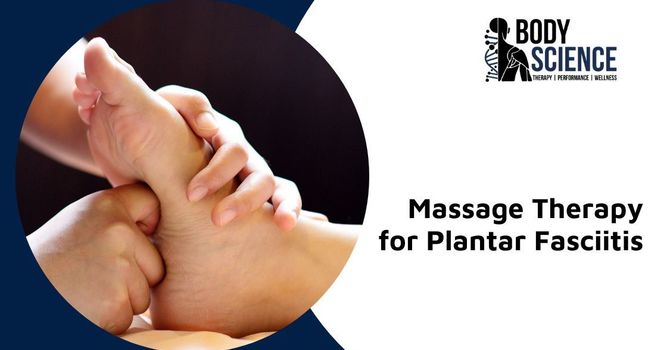
If you’ve ever suffered from plantar fasciitis, you know how painful it is: it’s like the sensation of being stabbed in the heel with a hot needle again and again with every step you take.
When you run or walk, especially on materials that are solid and unyielding, the pressure created by your body weight can cause stress on the plantar fascia (the band of tissue that connects your toes to your heel).
With time, this stress can turn into the chronic pain and swelling we know as plantar fasciitis. With the persistent foot pain of plantar fasciitis, your ability to deal with the discomfort– and your desire to continue with life as usual– is put to the test.
Regrettably, there are no magic fixes for plantar fasciitis. However there are several methods to reduce discomfort from plantar fasciitis, and among the best methods is massage treatment.
Not only is massage treatment economical and widely accessible, but it’s likewise proven to be effective in easing plantar fasciitis pain.
Calf stretching, icing the affected area, and massaging your plantar fascia may all help to ease some or all of the discomfort. But why does massage succeed so well for plantar fasciitis? Let’s take a look at how massage works to ease this frequent source of heel pain.
So What is Massage Treatment?
Massage therapy is making use of a wide range of hands-on moves and methods to apply force to the soft tissues of your body.
Massage therapists manipulate your muscles and connective tissues to help lessen muscle stress and discomfort, improve blood flow, and encourage relaxation. It might be employed as a form of preventive healthcare or as a procedure for specific problems such as plantar fasciitis.
How Does Massage Relieve Discomfort for Plantar Fasciitis?
When you suffer from plantar fasciitis, the ligament on the bottom of your foot ends up being inflamed, puffy, and incredibly tender. This can also happen in your calf muscles if you have bad posture.
As far as plantar fasciitis and bad posture are concerned, massage therapy is made use of to dissolve the lactic acid crystals that build up in the soft tissue of the calves and bottoms of the feet. This helps ease swelling and discomfort.
Massage therapy is additionally thought to be beneficial in treating soft tissue injuries because it increases blood circulation to the impacted locations.
More blood circulation guarantees more oxygen and nutrients reaching that uncomfortable, inflamed tissue. That helps to speed up the healing process, so you can get back to normal faster.
Which Kind of Massage Therapy is the Best for Plantar Fasciitis?
Given that plantar fasciitis is a painful disorder, the majority of experts suggest a deep tissue massage for relief. Deep tissue massage is a type of massage treatment that targets the deeper layers of connective tissue and muscle. It is normally performed with harder pressure, frequently employing the therapist’s knuckles or elbows.
Rewards of Massage Treatment for Plantar Fasciitis
Beyond decreasing the discomfort of plantar fasciitis and hastening the healing process, massage treatment offers a number of other advantages:
- Enhances Sleep – Getting a massage is an excellent way to unwind and quiet your body down prior to you falling asleep. It may be an effective method to lessen tension, decompress after a long day, and improve your sleep quality.
- Lessens Depression and Anxiousness – A massage can be a fantastic method to address feelings of anxiety and unhappiness. It’s a kind of self-care that will deeply relax your body, mind, and spirit.
- Boosts Your Immune System – When you are stressed or nervous, your body goes into its fight or flight reaction. This triggers your immune system to minimize its performance to avoid overspending energy.
How Frequently Should You Have Massage Therapy for Plantar Fasciitis?
If you have plantar fasciitis, you ought to have a massage a minimum of once a week. For best outcomes, you can experiment with integrating massage with other forms of treatment, like stretching, icing, and utilizing supportive insoles and shoes. Make certain to consult your massage therapist about the best frequency for your massage sessions.
How to Choose a Fantastic Massage Therapist
When you are looking for a massage therapist, the first thing you should do is to ask around. See if any friends or loved ones can suggest a therapist they’ve had a positive experience with. Beyond that, there are a few other ways you may discover a fantastic massage therapist:
- It’s recommended to choose a therapist who focuses on sports massage. Sports massage is a kind of massage that focuses on the particular requirements of athletes, including muscles, joints, and other soft structures like the plantar fascia. To be successful, a sports massage therapist ought to have training in anatomy and biomechanics.
- Check out online reviews – You can find reviews for many massage therapists online. Be sure to search for reviews from patients that have similar symptoms as you do.
- Inspect your insurance – If you have medical insurance, it may pay for massage treatment. Before you make an appointment, check to see if massage therapy is covered under your insurance policy.
- Ask your doctor – Your doctor knows you better than anyone. If you have plantar fasciitis and you’re looking for a massage therapist, ask your doctor for a referral.
Conclusion
When you have plantar fasciitis, you can suffer with a lot of discomfort and pain. One great way to relieve this discomfort is by receiving regular massages.
Massage treatment can help to get rid of lactic acid crystals, increase blood circulation, and accelerate the restorative healing process.
Give us a call at Mississauga’s Body Science Therapy right away and we can schedule eliminating your plantar fasciitis discomfort. Now booking new clients!
